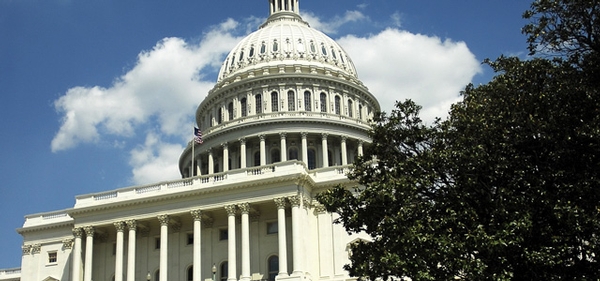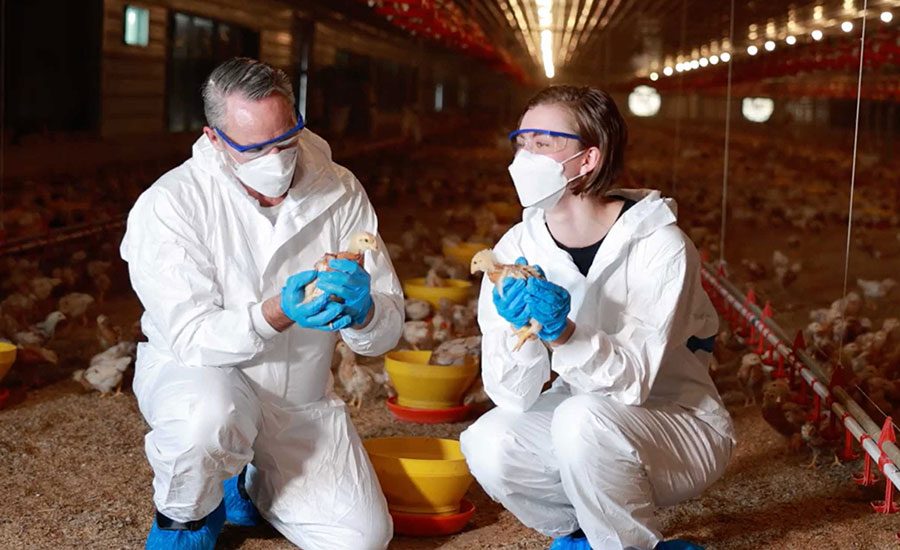With the signing of the Food Safety Modernization Act (FSMA) into law, changes in the way food safety is regulated have begun. Questions remain as to how the implementation of the FSMA will affect the food industry as a whole, and individual companies are seeking to understand just where to begin revamping their processes and procedures. The two articles that follow provide some guidance as the industry starts down the road to compliance with this
new regulation.
-BV
The past years have seen a number of well-publicized outbreaks of food-related illness, resulting in massive recalls and health alerts issued because of the contamination of ubiquitous food products with potentially life-threatening microbial pathogens.
Such food safety emergencies resulted in a perfect storm: a rare political alignment between members of Congress, the White House and relevant federal agencies regarding the need to overhaul the nation’s food safety system. On December 21, 2010, these efforts culminated in the passage of landmark food safety legislation by the U.S. Congress that dramatically increased the authority of the U.S. Food and Drug Administration (FDA) over food sold in the U.S. The legislation was signed into law by President Obama on January 4, 2011.
The new law changes dramatically the legal framework for regulating food safety in the U.S. The food industry and even less directly involved entities such as food packaging and food contact material manufacturers, should be aware of the evolving legal landscape and new obligations that will be imposed. To that end, this article summarizes key aspects of the new legislation and identifies important considerations for the food industry as it prepares to comply with heightened regulatory obligations.
Food Safety Legislation
Floor statements, hearings and testimony before Congress put a face on the morbidity and mortality associated with foodborne illness.[1] The law responded to these concerns and the perceived ineffective regulation of food facilities and resulting threats to food safety by increasing FDA’s authority and creating more stringent controls on food production and sale. Specifically, the law requires food processing, manufacturing, shipping and other regulated facilities to conduct analyses of the most likely safety hazards and to design and implement risk-based controls to prevent them.[2] The law also establishes science-based “performance standards” for the most significant food contaminants.[3] To aid in these tasks, the law strengthens foodborne illness surveillance systems and authorizes agency rulemaking to enhance food traceability.[4]
The law also increases the frequency of FDA inspections, including those of foreign facilities, while requiring periodic renewal registrations and establishing user fees for reinspection and recall-related costs.[5] FDA will be required to target its inspectional resources on high-risk facilities, in accordance with known safety risks of the facility, compliance history and rigor and effectiveness of the facility’s hazard analysis and risk-based preventive controls.[6] The new law also tightens industry recordkeeping requirements and grants FDA new authority to inspect company records, mandate product recalls and quarantine food for which FDA has “reason to believe the article is adulterated or misbranded.”[7] Moreover, FDA must establish laboratory accreditation standards for laboratories conducting food testing while working with other federal agencies to form an integrated consortium of food testing laboratory networks.[8]
Under the law, FDA is required to conduct analyses and compile reports to assess the safety of the food supply and to recommend improvements to security and to work cooperatively with other agencies to carry out its responsibilities to strengthen food safety oversight. For example, FDA must conduct a vulnerability assessment and promulgate regulations to protect against intentional adulteration of food.[9] In a separate provision, FDA must coordinate with the United States Department of Agriculture (USDA) to draft a National Agriculture and Food Defense Strategy to enhance preparedness of the nation’s food system, improve detection, ensure efficient response to agriculture and food emergencies and secure production after an agriculture or food emergency.[10] Moreover, together with the Department of Homeland Security and USDA, FDA must submit a report to Congress identifying programs and practices intended to promote the safety and supply chain security of food and to prevent foodborne illness and other food-related hazards.[11] The law also requires FDA to implement standards and administer training and education for state, local, territorial and tribal food safety officials relating to regulatory responsibilities under the Federal Food, Drug and Cosmetic Act,[12] and establishes five Integrated Food Safety Centers for Excellence to serve as resources to respond to foodborne illness outbreaks.[13]
Major portions of the law are also devoted to increasing the scrutiny of food imported into the U.S. from abroad. These new provisions authorize FDA to require that food imports be accompanied by certifications of compliance with U.S. food safety standards. Foods that are subject to these requirements will be refused admission if they are not accompanied by the proper documentation.[14] The law also permits FDA to determine whether international food safety programs and standards are adequate to ensure that food imported into the U.S. is as safe as similar products manufactured, processed, packed or held domestically.[14] Importers will be required to implement risk-based foreign supplier verification programs for most of their imported foods, and FDA must establish a voluntary qualified importer program to certify participating importers and provide for expedited review and importation of food.[15] FDA will also establish international offices to provide assistance to foreign governmental entities to ensure the safety of food exported by those countries to the U.S. and accreditation standards for third-party auditors for the purposes of conducting inspections.[16]
Administrative Initiatives
In tandem with, and in support of, this significant legislative update, other branches of government have taken steps to improve the food safety framework. On March 14, 2009, President Obama announced the formation of the Food Safety Working Group (FSWG) to consider and devise new strategies to upgrade U.S. food safety laws, foster coordination of food safety efforts throughout government and ensure laws are adequately enforced to keep Americans safe from foodborne illness.
On July 1, 2009, the FSWG identified three core food safety principles to guide the development of a coordinated food safety system: 1) the prevention of foodborne illness outbreaks through the aggressive implementation of measures such as supplying agencies with the legal tools and resources necessary to impose adequately protective food safety standards; 2) the implementation of effective food safety inspections and enforcement based on high-quality information, data and analysis in which the relevant agencies are provided with the resources and authority to proactively identify vulnerabilities and contamination in the food supply; and 3) the rapid identification and containment of outbreaks of foodborne illness through the establishment of a food tracing system to shorten the time between outbreak detection, resolution and recovery.[17] The new food safety legislation attempts to address each of these priorities.
Under the leadership of Commissioner Margaret Hamburg, FDA is making a renewed commitment to food safety by making the regulation of food a top priority among FDA’s many regulatory responsibilities. In Dr. Hamburg’s statements before various congressional committees and her speeches in national food policy forums, she has indicated that FDA’s focus is on prevention of harm and that FDA initiatives will be targeted at the entire food supply chain “from farm to table,” that is, at all stages of production through distribution. In her testimony before the House Energy & Commerce Committee and the Senate Health, Education, Labor and Pensions Committee in support of their respective food safety bills, Dr. Hamburg endorsed the overarching objectives of the legislation and thanked the Committees for the opportunity to discuss the “urgent need for reform of our nation’s food safety system.”[18]
The FDA has also worked in collaboration with USDA to further the FSWG’s central focus of fostering coordination among the agencies with responsibility for food safety. The recently enacted food safety legislation, while primarily focused on enhancing FDA’s legal authority, recognizes that USDA also plays a major role in ensuring that certain types of food entering the nation’s food supply are properly inspected and safe for consumption. Historically, USDA has primary responsibility for the safety of meat, poultry and certain egg products, while FDA is authorized to regulate all other foods. In implementing the various executive initiatives and new legislative mandates, policymakers expect these two agencies to synchronize efforts to ensure that there are no gaps in the regulation of the food industry in light of the agencies’ respective jurisdictions.
Conclusion
Significant steps, backed by the political will of major policymakers, have prompted dramatic changes to the U.S. food safety regulatory framework. Indeed, agencies tasked with protecting the public health with respect to food products are already subjecting the food industry to increased scrutiny and oversight, and will soon be required by law to do so. The new requirements contained in the food safety legislation will require major investment by industry members throughout the food supply chain in order to create the infrastructure contemplated for preventing foodborne illnesses. As such, industry must intimately understand the new and developing obligations to be imposed and the specific authority granted to the agencies responsible for implementing them.
Carolyne R. Hathaway is a partner in the Washington, D.C. office of Latham & Watkins. Her practice focuses on matters involving the FDA.
John R. Manthei is in the Washington, D.C. office of Latham & Watkins and is the Global Co-Chair of the firm’s Healthcare and Life Sciences Practice.
Rebecca M. Schaefer is an associate in the Washington, D.C. office of Latham & Watkins.
Elizabeth M. Richards is an associate in the Washington, D.C. office of Latham & Watkins.
References:
1. 155 Cong. Rec. S2692.
2. H.R. 2751 § 103.
3. H.R. 2751 § 104.
4. H.R. 2751 §§ 204, 205.
5. H.R. 2751 §§ 102, 107, 201.
6. H.R. 2751 § 201.
7. H.R. 2751 §§ 101, 204, 206, 207.
8. H.R. 2751 § 202.
9. H.R. 2751 § 106.
10. H.R. 2751 § 109.
11. H.R. 2751 § 110.
12. H.R. 2751 § 209.
13. H.R. 2751 § 210.
14. H.R. 2751 § 303.
15. H.R. 2751 §§ 301, 302.
16. H.R. 2751 §§ 307, 308.
17. www.whitehouse.gov/the_press_office/ Obama-Administration-Delivers-on-Commitment-to-Upgrade-US-Food-Safety-System/.
18. www.hhs.gov/asl/testify/2009/06/t20090603a.html.
Food Safety Modernization Act: What's Next?

Looking for a reprint of this article?
From high-res PDFs to custom plaques, order your copy today!




